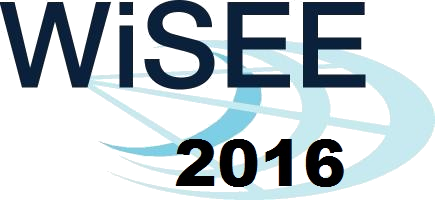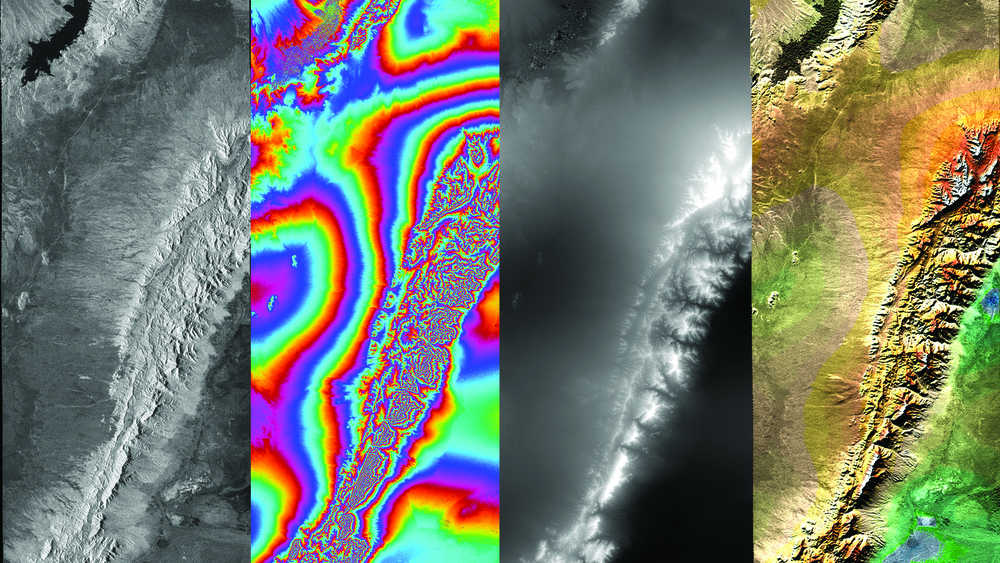

Keynote Speakers
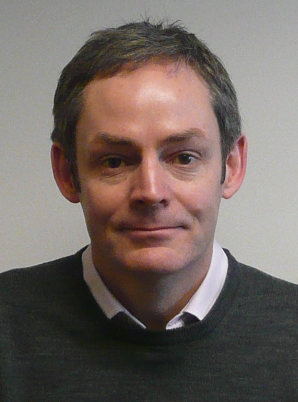
Dominic O’Brien
Department of Engineering Science, University of Oxford
Title: Optical Wireless Communications: Current approaches and future directions
Future communications networks will require extremely high data rate wireless connectivity in order to allow users to access the bandwidth that will be available from an all-optical fixed core network. The spectrum ‘crunch’ means that this is unlikely to be met using RF approaches at carrier frequencies that provide good coverage, as has been traditionally been the case. Optical wireless, both at visible and infrared wavelengths, has the potential to access hundreds of THz of spectrum, using devices that are potentially low cost. In this presentation different approaches to providing access will be described, together with some of the fundamental challenges for the optical wireless channel. Finally, future directions, and potential architectures for an all-optical approach to communications will be described.
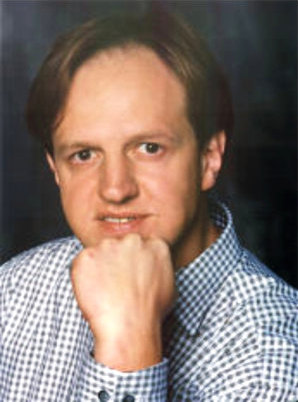
Harald Haas
Institute for Digital Communications, The University of Edinburgh
Title: Shining light on LiFi
We will start by clarifying the differences between visible light communications (VLC) and LiFi. This is followed by the introduction of the key building blocks required to create full LiFi networks. Next we report recent key achievements of the UP-VLC project with respect to component and demonstrator developments underpinning LiFi atto- cellular networks. We provide modelling results of such networks and address numerous misconceptions such as ”LiFi is a line-of-sight technology". The talk also addresses the issue of energy efficiency of optical attocell networks and showcases how off-the-shelf solar panels can fulfil two functions at the same time, i) energy harvesting and ii) LiFi data detection. The talk closes by summarizing commercialization challenges.
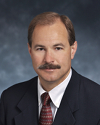
David Redman
Director, Aerospace Vehicle Systems Institute (AVSI)
Title: Wireless Avionics Intra-aircraft Communications (WAIC) for Commercial Aircraft
Wireless Avionics Intra-Communications (WAIC) systems will liberate aircraft safety service interconnections from tethered wiring, offering designers and operators opportunities to improve flight safety, reliability, and operational efficiency. By reducing the overall system weight, wireless provides fuel reduction and subsequent environmental benefits, supporting more cost-effective flight operations. WAIC also supports reduced complexity of aircraft design and manufacture, lowers maintenance costs, and yields greater flexibility to enhance aircraft systems that maintain or increase the level of safety, thereby improving an aircraft's performance over its useful lifetime. The AVSI WAIC team worked with various national administrations over the past 7 years to establish an Agenda Item (AI 1.17) at the World Radio Conference 2012 (WRC-12), and then provided thorough analyses and proof of non-interference co-existence through the ITU-R Working Party 5B to successfully obtain an allocation of dedicated spectrum for WAIC in the candidate 4200-4400 MHz band at WRC-15 under this Agenda Item. The 4200-4400 MHz band was exclusively reserved for radar altimeter applications prior to this allocation. Under AVSI project AFE 76 – WAIC Protocols, detailed network and hardware architectures, protocols, requirements, and appropriate protection criteria for spectrum sharing are being defined to protect WAIC and legacy altimeter systems from interfering with each other. WAIC applications have been categorized as either Low Rate (< 10kbits/sec data transmit rate) or High Rate (>10 kbits/sec), each having some unique SWaP, cost, and performance requirements. AFE 76 is now addressing more detailed design issues, including: system boundaries where WAIC standards might be applied; plans for WAIC spectrum assignments to ensure efficient usage; channel allocation and channel spacing scheme for WAIC systems; methods for achieving coexistence between WAIC systems installed on different aircraft; and a road map for working with international regulatory and standards organizations to ultimately implement WAIC components and systems.
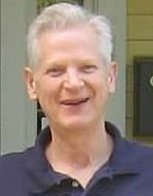
Darel Preble
Executive Director & President, Space Solar Power Institute, Atlanta, Georgia USA
Title: Space Solar Power and the Energy, Economics (& Environment) Road Ahead
The world's failed and increasingly and rapidly unraveling Energy, Economics (& Environmental (EEE) policies have been desperately subsidizing "all of the above" energy alternatives. Stated more correctly, these have been any energy alternative except one that would provide a real energy alternative to fossil fuels(oil, gas and coal). This is unsurprising, since fossil energy is the most profitable industry on planet Earth. SSP's compelling EEE features, however, will not only greatly surpass the analytical features of our existing energy industry, but provide huge numbers of excellent jobs leading to commercialization of the entire cis-lunar space (Earth to Moon neighborhood).
For an economic example, the Space Solar Power Institute does not yet have a space transportation working group, but we pledged $10,000. to help sponsor a continuing conference where interested space transportation companies (there are a half dozen now working that challenge) would come and join in bringing into focus the low cost space transportation necessary for global SSP system construction. Currently our diverse communications satellite industry is a $333 Billion dollar industry. Since we expect to launch a thousand times more vehicles to orbit per year after an SSP system begins construction, this might suggest that SSP would become a $333 Trillion dollar industry. SSP would obviously take some time to meet and surpass that bar, when we become serious about this EEE basket, or bouquet, of problems. That's a lot of jobs. Retraining and redirecting our coal mining industry, for example, to become Moon miners and SSP construction and parts manufacturers will require a lot of hands and hearts.
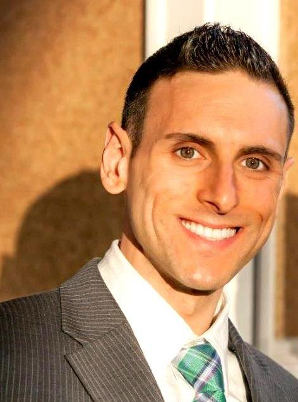
Robert Croce
New Product Development, HarcoSemco, Branford CT, USA
Title: Design and development of avionic sensors and systems for Wireless Avionics Intra-Communications (WAIC)
The introduction of wireless avionic sensors and systems to the commercial aerospace industry will play an integral role in the development of next generation aircraft. In particular, the Wireless Avionics Intra-Communications (WAIC) Project, under the Aerospace Vehicle Systems Institute (AVSI) AFE-76, aims to develop design methodologies, protocol requirements and other relevant wireless networking recommendations to ensure the reality of wireless avionics for safety-related applications on commercial aircraft. WAIC will have applicability in areas such as engine sensors, environmental control systems, and structural health monitoring, which are envisioned to be designed as both passive and active systems. The benefits of these wireless systems include, but are not limited to, the overall reduction of aircraft wiring (weight and cost savings), mitigation of single-point failures and lower frequency of maintenance. WAIC was allocated a frequency band of 4.2 to 4.4 GHz at the WRC-15 under ITU Agenda Item (1.17), and therefore must give precedence and coexist with radio altimeters onboard the aircraft. Work is currently being carried out to explore coexistence scenarios and interference avoidance techniques between WAIC and the radio altimeters. Experimental flight tests at NASA’s Armstrong Flight Research Center will be carried out in order to provide insight on WAIC coexistence and interference scenarios; the results of which will serve as a design tool for commercial wireless avionics development to abide by radio altimeter protection and coexistence criteria for the successful deployment of WAIC systems on aircraft.
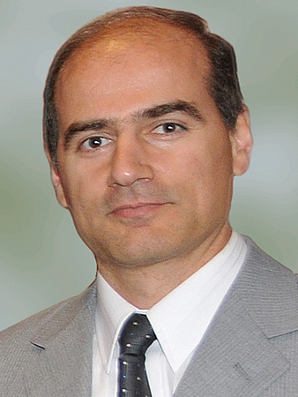
Amir Aghdam
Department of Electrical and Computer Engineering, Concordia University, Canada
Title: Connectivity of Asymmetric Sensor Networks
In this presentation, connectivity of an asymmetric network represented by a weighted directed graph is investigated. The notion of weighted vertex connectivity is introduced as a metric to evaluate the connectivity of a random sensor network where the elements of the weight matrix characterize the operational probability of their corresponding communication links. The weighted vertex connectivity measure extends the notion of vertex connectivity to weighted graphs by taking into account the joint effects of path reliability and network robustness to node failure. The problem of finding the weighted vertex connectivity measure is transformed into a sequence of iterative deepening depth-first search and maximum weight clique problems, and based on that, an algorithm is developed to find the proposed connectivity metric. The approximate weighted vertex connectivity measure is defined subsequently as a lower bound on the introduced connectivity metric which can be found by applying a series of a polynomial-time shortest path algorithm. The notion of generalized algebraic connectivity is also introduced as an extension of the algebraic connectivity to weighted directed graphs. This measure reflects the expected asymptotic convergence rate of cooperative algorithms used to control the network. This connectivity measure is then described in terms of the eigenvalues of the Laplacian matrix of the digraph representing the network. The advantage of this new metric over the algebraic connectivity measure in describing the connectivity of asymmetric networks is demonstrated using some counter-intuitive examples. The generalized power iteration algorithm is then developed to compute the proposed connectivity measure in a distributed fashion. The performance of the proposed algorithm is validated using an experimental underwater acoustic sensor network.
Schedule
The preliminary announcement looks like this:
| Monday | Tuesday | Wednesday | Thursday | |||||
|---|---|---|---|---|---|---|---|---|
| 26th September | 27th September | 28th September | 29th Sept. | |||||
| 8:30 | Opening Remarks Conference Chairs | Opening Remarks TPC Chairs | Opening Remarks Passive Wireless Sensor Technology | Extra Event | ||||
| 8:45 | Keynote-1 WOSA | Keynote-3 SSP | Keynote-5 PWST | |||||
| 9:45 | Break | Break | Break | |||||
| 10:00 | WiSEE S1 | WOSA S1 | WiSEE S4 | SSP S1 | PWST S1 | |||
| 12:00 | Lunch | Lunch | Lunch | |||||
| 13:15 | Keynote-2 WOSA | Keynote-4 WiSEE | Keynote-6 PWST | |||||
| 14:15 | WiSEE S2 | WOSA S2 | WiSEE S5 | PWST S2 | ||||
| 15:45 | Break | Break | Break | |||||
| 16:00 | WiSEE S3 | WOSA S3 | WiSEE S6 | SSP S2 | Closing/Awards Ceremony | |||
| 18:00 | ||||||||
| 19:00 | Banquet | |||||||
| 21:00 | ||||||||
Extra Event
On September 29, a one-day excursion to both the Tracking and Imaging RAdar and the Radio Telescope Effelsberg is arranged!
Space Observation with the TIRA System
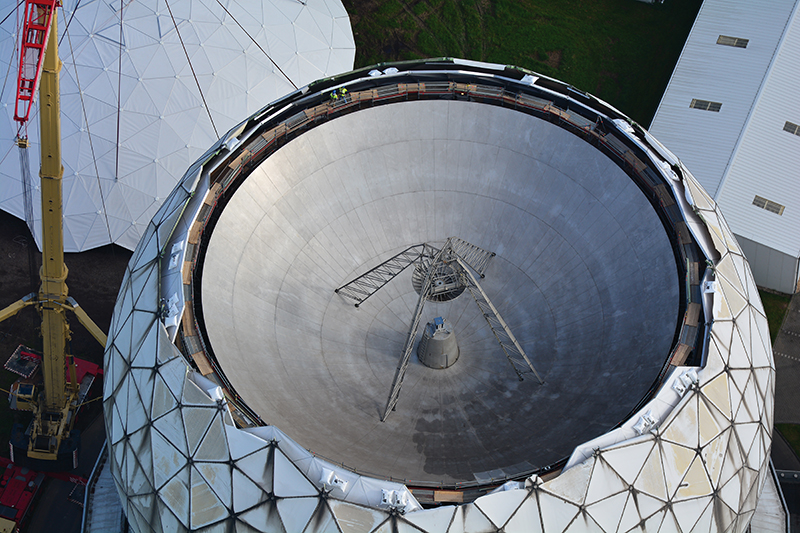 is the title of the first presentation at the one-day tour. The space observation radar TIRA (Tracking and Imaging Radar) on Wachtberg is not only the largest experimental system at Frauenhofer-FHR, it is also unique in Europe. As the name implies, the TIRA system comprises a tracking radar and an imaging radar. Moreover, the system holds several world records. Space agencies from all over the world use the special capabilities of the Fraunhofer scientists and their system for space missions. The system is used to gain precise measurements of space debris, prevent evasive maneuvers for operative satellites or create an image of an object that has gone out of control. This includes technical faults or the uncontrolled re-entry of satellites into the Earth's atmosphere. The presentation will cover the technical limits and a brief history of the TIRA along with its various applications.
is the title of the first presentation at the one-day tour. The space observation radar TIRA (Tracking and Imaging Radar) on Wachtberg is not only the largest experimental system at Frauenhofer-FHR, it is also unique in Europe. As the name implies, the TIRA system comprises a tracking radar and an imaging radar. Moreover, the system holds several world records. Space agencies from all over the world use the special capabilities of the Fraunhofer scientists and their system for space missions. The system is used to gain precise measurements of space debris, prevent evasive maneuvers for operative satellites or create an image of an object that has gone out of control. This includes technical faults or the uncontrolled re-entry of satellites into the Earth's atmosphere. The presentation will cover the technical limits and a brief history of the TIRA along with its various applications.
After the presentation, a guided tour to the parabolic dish is planed. If needed conditions for a demonstration are available, TIRA can be observed during its operation time.
Radio Telescope Effelsberg
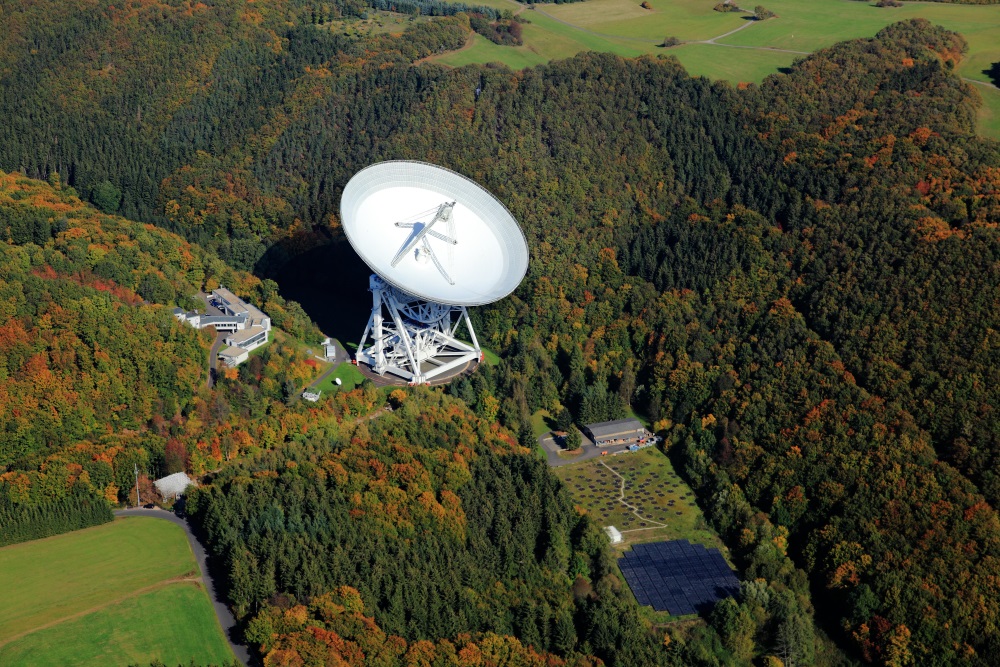 An introductory talk at the visitors‘ pavilion of the Effelsberg Radio Observatory will cover some technical properties of the 100m radio telescope including its surface accuracy which enables observations to a limiting frequency of 96 GHz corresponding to 3.5 mm wavelength and also the different modes of radioastronomical observations performed with the telescope. These include spectroscopy with high frequency resolution, observations of pulsar signals at high timing resolution and broadband observations in order to map extended portions of the sky, derive radio fluxes and magnetic field structure via polarized radio emission. An additional observing method (Very Long Baseline Interferometry, VLBI) combines a number of radio telescopes around the Earth in order to improve spatial resolution. Space VLBI extends such virtual radio telescopes even beyond the size of the Earth. A second radio telescope at Effelsberg, LOFAR, enables radio observations at metre wavelength within a European framework of connected field stations.
An introductory talk at the visitors‘ pavilion of the Effelsberg Radio Observatory will cover some technical properties of the 100m radio telescope including its surface accuracy which enables observations to a limiting frequency of 96 GHz corresponding to 3.5 mm wavelength and also the different modes of radioastronomical observations performed with the telescope. These include spectroscopy with high frequency resolution, observations of pulsar signals at high timing resolution and broadband observations in order to map extended portions of the sky, derive radio fluxes and magnetic field structure via polarized radio emission. An additional observing method (Very Long Baseline Interferometry, VLBI) combines a number of radio telescopes around the Earth in order to improve spatial resolution. Space VLBI extends such virtual radio telescopes even beyond the size of the Earth. A second radio telescope at Effelsberg, LOFAR, enables radio observations at metre wavelength within a European framework of connected field stations.
The second part of the program at Effelsberg includes a guided tour to different stations, starting at the visitors’ pavilion: viewing spot directly in front of the 100m dish, Effelsberg LOFAR station consisting of a number of antennas for observations between 25 and 240 MHz, and the observatory building with the main control room for the 100m radio telescope.
You need to register for this tour on EDAS. Since both the transportation and the attendance are limited, the principle of 'first come, first served' is applied. This tour is highly recommended to all attendees of the WiSEE.
Sep 26, 16
- 08:30 Opening Remarks: Conference Chairs
Gholamreza Alirezaei (RWTH Aachen University, Germany)
- Keynote-1 WOSA
- 08:45 Optical Wireless Communications: Current approaches and future directions
Dominic O'Brien (University of Oxford, United Kingdom)
- 08:45 Optical Wireless Communications: Current approaches and future directions
- WOSA S1
- Optical Wireless Communications, chair: Shlomi Arnon (Ben-Gurion University, Israel )
- 10:00 Low Power ASIC Design for Infrared Sensor Network Inside Ariane 5 Vehicle Equipment Bay
Hendra Kesuma (University of Bremen, Germany), Johannes Sebald, Sebastian Schmale, Steffen Paul - 10:40 Semi-transparent Solar Cells Indifferent to Ambient Lighting for LiFi Application
Emilie Bialic (Sunpartner Technologies, France) - 11:20 Optical Wireless Communications in High-Voltage Power Grid Environment
Zhou Zhou (State Grid Corporation of China, P. R. China), Mohsen Kavehrad, Weiguo Li, Jing Jiang
- 10:00 Low Power ASIC Design for Infrared Sensor Network Inside Ariane 5 Vehicle Equipment Bay
- WiSEE S1
- Energy-Aware Sensor Networks, chair: Ali Abedi (University of Maine, USA)
- 10:00 Lifetime and Power Consumption Optimization for Distributed Passive Radar Systems
Omid Taghizadeh (RWTH Aachen University, Germany), Gholamreza Alirezaei, Rudolf Mathar - 10:24 Partial Distributed Beamforming Design in Passive Radar Sensor Networks
Omid Taghizadeh, Vimal Radhakrishnan (RWTH Aachen University, Germany), Gholamreza Alirezaei, Rudolf Mathar - 10:48 Power Allocation for Multi-Target Sensor Networks
Ehsan Zandi (RWTH Aachen University, Germany), Gholamreza Alirezaei, Rudolf Mathar - 11:12 Power Allocation for Multi-Target Multi-Fusion-Rule Sensor Networks
Ehsan Zandi (RWTH Aachen University, Germany), Gholamreza Alirezaei, Omid Taghizadeh, Rudolf Mathar - 11:36 Efficient Set-Membership Filtering Algorithms for Wireless Sensor Networks
Pouya Ghofrani (RWTH Aachen University, Germany), Anke Schmeink
- 10:00 Lifetime and Power Consumption Optimization for Distributed Passive Radar Systems
- Keynote-2 WOSA
- 13:15 Shining light on LiFi
Harald Haas (University of Edinburgh, United Kingdom)
- 13:15 Shining light on LiFi
- WOSA S2
- Modelling, Analysing and Optimizing, chair: Dominic O'Brien (University of Oxford, United Kingdom)
- 14:15 Stochastic Model for Data Center Energy Saving Augmented by Optical Wireless Links
Shlomi Arnon (Ben-Gurion University, Israel ) - 14:45 Reducing Energy Consumption of Data Centers Using Optical Wireless Links
Shlomi Arnon (Ben-Gurion University, Israel ), Etai Rosenkrantz - 15:15 1-D Array of Silicon Nitride Grating Couplers for Visible Light Communications
Shahryar Sabouri (Dresden University of Technology, Germany), Meysam Namdari, Seyedreza Hosseini, Kambiz Jamshidi
- 14:15 Stochastic Model for Data Center Energy Saving Augmented by Optical Wireless Links
- WiSEE S2
- Localization, detection and tracking methods, chair: Amir G. Aghdam (Concordia University, Canada)
- 14:15 Joint Localization and Transmit-Ambiguity Resolution for Ultra-Low Energy Wireless Sensors
Stephan Schlupkothen (RWTH Aachen University, Germany), Gerd H. Ascheid - 14:45 Analysis of Leak Spectral Signatures in Pressurized Space Modules
Kenn Bundy, Chitra Manjani Pandian, Ali Abedi (University of Maine, USA), Vince Caccese - 15:15 A Measurement-Based Trajectory Model for Drifted Motions Towards a Target Zone
Kalpanie Mendis, Alireza Borhani (University of Agder, Norway)
- 14:15 Joint Localization and Transmit-Ambiguity Resolution for Ultra-Low Energy Wireless Sensors
- WOSA S3
- Li-Fi, chair: Harald Haas (University of Edinburgh, United Kingdom)
- 16:00 Performance Comparison of VLC MIMO Techniques Considering Indoor Illuminance with Inclined LEDs
Ruowen Bai (Tsinghua University, P. R. China), Rui Jiang, Jiandong Tan, Jinguo Quan - 16:40 Adaptive Real-Time Software Defined MIMO Visible Light Communications Using Spatial Multiplexing and Spatial Diversity
Peng Deng (Pennsylvania State University, USA), Mohsen Kavehrad - 17:20 Utility of Light Emitting Diodes for Inter-Satellite Communication in Multi-Satellite Networks
David Amanor, William Edmonson (North Carolina A&T State University, USA), Fatemeh Afghah
- 16:00 Performance Comparison of VLC MIMO Techniques Considering Indoor Illuminance with Inclined LEDs
- WiSEE S3
- Delay and Disruption Tolerant Networks, chair: Juan Fraire (Universidad Nacional de Córdoba, Argentina)
- 16:00 Adaptive Rateless Coding Scheme for Deep-Space Ka-band Communications
Chen Chen, Jian Jiao (Shenzhen Graduate School of Harbin Institute of Technology, P. R. China) - 16:24 Toward a Unified Routing Framework for Delay-Tolerant Networking
Scott C Burleigh (California Institute of Technology, USA), Carlo Caini, Jako Messina, Michele Rodolfi - 16:48 Message Prioritization Support for Space Delay/Disruption Tolerant Networks
Hongcheng Yan (China Academy of Space Technology, P. R. China), Weisong Jia, Hongjun Zhang, Jian Guo - 17:12 Dynamic Discovery of Ground Stations in Ring Road Networks
Felix Walter (Dresden University of Technology, Germany), Marius Feldmann - 17:36 LTP Asynchronous Accelerated Retransmission Strategy for Deep Space Communications
Haitao Wu, Yunhe Li, Jian Jiao (Shenzhen Graduate School of Harbin Institute of Technology, P. R. China), Bin Cao, Qinyu Zhang
- 16:00 Adaptive Rateless Coding Scheme for Deep-Space Ka-band Communications
Sep 27, 16
- 08:30 Opening Remarks: TPC Chairs
Ali Abedi (University of Maine, USA)
- Keynote-3 SSP
- 08:45 Space Solar Power and the Energy, Economics (& Environment) Road Ahead
Darel Preble (Space Solar Power Institute, USA)
- 08:45 Space Solar Power and the Energy, Economics (& Environment) Road Ahead
- SSP S1
- Space Based Solar Power, chair: Darel Preble (Space Solar Power Institute, USA)
- 10:00 Tutorial Space Solar Power Trends and Technology
Seyed (Reza) Zekavat (Michigan Technological University, USA) - 11:30 Panel Discussion
- 10:00 Tutorial Space Solar Power Trends and Technology
- WiSEE S4
- Implementation, Simulation and Integration, chair: Christoph Degen (Hochschule Niederrhein University of Applied Sciences, Germany)
- 10:00 Internetworking Approaches Towards Along-Track Segmented Satellite Architectures
Juan Fraire (Universidad Nacional de Córdoba, Argentina), Pablo Madoery, Jorge M. Finochietto, Pablo Ferreyra, Raoul J. Velazco - 10:24 Deployment of a Wireless Sensor Network in Assembly, Integration and Test Activities
Martin Drobczyk (German Aerospace Center (DLR), Germany), Hauke Martens - 10:48 A 4-Elements Performance Analysis of Compact UWB Antenna for MIMO-OFDM Systems
Wael Ali, Darwish Mohamed, Rania Thabet (Arab Academy for Science, Technology & Maritime Transport, Egypt) - 11:12 Novel Synthetic Phased-Array Antenna Systems for Wide-view Concertos Platforms
Eugene Ngai (Hann-Jann (RF-Tech) Consultancy, USA) - 11:36 Implementation of an UWB-based Module Designed for Wireless Intra-Spacecraft Communications
Ovidiu Ratiu, Andrei Rusu, Andra Pastrav, Tudor P. Palade, Emanuel Puschita (Technical University of Cluj-Napoca, Romania)
- 10:00 Internetworking Approaches Towards Along-Track Segmented Satellite Architectures
- Keynote-4 WiSEE
- 13:15 Connectivity of Asymmetric Sensor Networks
Amir G. Aghdam (Concordia University, Canada)
- 13:15 Connectivity of Asymmetric Sensor Networks
- WiSEE S5
- Demonstrations and Poster Presentations, chair: Gholamreza Alirezaei (RWTH Aachen University, Germany)
- A Mobile Embedded-Linux-Based Testbed for Outdoor Ad Hoc Network Evaluation
Silvia Krug (Technische Universitaet Ilmenau, Germany), Alexander Brychcy, Jochen Seitz - Applying Simplification Algorithms for Efficient EM-Simulations of a Complex Galileo Satellite Model
Christos Oikonomopoulos, Winfried Simon, Michael Meuleners, Christoph Degen (Hochschule Niederrhein University of Applied Sciences, Germany) - Chipless RFID Tag Exploiting Cross Polarization for Angular Rotation Sensing
Simone Genovesi (University of Pisa, Italy), Filippo Costa, Michele Borgese, Agostino Monorchio, Giuliano Manara - Network Coded Cooperation in Delay Tolerant Network
Onur Çalık, Tuana Ensezgin (Istanbul Technical University, Turkey), Burhan Öztaner, Selahattin Gökceli, Semiha Tedik Başaran, Gunes Karabulut Kurt - Photovoltaic Laser Power Converters for Wireless Optical Power Supply of Sensor Systems
Henning Helmers (Fraunhofer Institute for Solar Energy Systems ISE, Germany), Andreas W. Bett - PWS Demo at 4.2-4.4 GHz
Taimur Aftab (University of Freiburg, Germany)
- A Mobile Embedded-Linux-Based Testbed for Outdoor Ad Hoc Network Evaluation
- SSP S2
- Energy Economics and Transfer, chair: Seyed (Reza) Zekavat (Michigan Technological University, USA)
- 16:00 Low Cost Space Transportation for SSP
Darel Preble (Space Solar Power Institute, USA) - 16:40 The Energy Economics Challenges Facing us Today
Gail Tverberg (Space Solar Power Institute, USA) - 17:20 Wireless Energy Transfer for Sensor Networks
Ali Abedi (University of Maine, USA), DeLisa Wilkerson
- 16:00 Low Cost Space Transportation for SSP
- WiSEE S6
- Wireless Sensor Systems, chair: Amir G. Aghdam (Concordia University, Canada)
- 16:00 Reliable Real-time Wireless Sensor Networks Using Spatial Diversity
Divya Tati (Airbus Group Innovations, Germany), Jirka Klaue, Johannes Sebald - 16:24 The Influence of Cross-Section of Body with Tag on Operation of Homodyne System of RFID and Localization
Igor Borisovich Shirokov (Sevastopol State University, Russia), Ivan Skorik, Ilyas S. Ablyakimov, Elena Ustimenko - 16:48 RF Energy Harvesting in Wireless Sensor Networks for Critical Aircraft Systems - An Experimental Approach
Charalambos Sergiou (University of Cyprus, Cyprus), Vasos Vassiliou, Konstantinos Christou - 17:12 Compressed Radio Transmission of Spatial Field Measurements by Virtual Sensors
Reiner Jedermann, Henning Paul (University of Bremen, Germany), Walter Lang - 17:36 Adaptive Communication and Cooperative MIMO Cluster Formation for Improved Lifetime in Wireless Sensor Networks
Marco Marinho (University of Brasilia, Brazil), Joao Paulo Carvalho Lustosa da Costa, Felix Antreich, Edison Pignaton de Freitas, Alexey Vinel
- 16:00 Reliable Real-time Wireless Sensor Networks Using Spatial Diversity
Sep 28, 16
- 08:30 Opening Remarks: Passive Wireless Sensor Technology
George Studor (NASA Engineering and Safety Center, USA)
- Keynote-5 PWST
- 08:45 Wireless Avionics Intra-aircraft Communications (WAIC) for Commercial Aircraft
David Redman (Aerospace Vehicle Systems Institute (AVSI), USA)
- 08:45 Wireless Avionics Intra-aircraft Communications (WAIC) for Commercial Aircraft
- PWST S1
- PWS Technologies, chair: George Studor (NASA Engineering and Safety Center, USA)
- 10:00 Passive Wireless SAW Sensor Technology and Applications at Transense
Victor Kalinin (Transense Technologies plc, United Kingdom) - 10:30 Wireless Interrogation of SAW Sensors for Advanced Applications
Sylvain Ballandras (frec|n|sys SASU, France) - 11:00 Dielectric Resonator based wireless passive sensors
Taimur Aftab (University of Freiburg, Germany) - 11:30 Advanced Interrogators for Passive Wireless Sensing
Thomas Ostertag (University of Freiburg, Germany)
- 10:00 Passive Wireless SAW Sensor Technology and Applications at Transense
- Keynote-6 PWST
- 13:15 Design Considerations of Avionic Sensors and Systems for Wireless Avionics Intra-Communications (WAIC)
Robert Croce (HarcoSemco Transdigm Group, USA)
- 13:15 Design Considerations of Avionic Sensors and Systems for Wireless Avionics Intra-Communications (WAIC)
- PWST S2
- PWS User Needs, chair: George Studor (NASA Engineering and Safety Center, USA)
- 14:15 Reliable Sensor Networks: a heterogeneous sensor acquisition architecture for future European launcher
Johannes Sebald (Airbus Defence and Space, Germany) - 14:45 Wireless Technology Use Case Requirement Analysis for Future Space Applications
Ali Abedi (University of Maine, USA), DeLisa Wilkerson - 15:15 Wide Band-gap Electronics for High Temperature Passive Wireless Sensing
John Fraley (Wolfspeed, A Cree Company, USA)
- 14:15 Reliable Sensor Networks: a heterogeneous sensor acquisition architecture for future European launcher
29-Sep-16
- 09:30 Starting by a tour bus from Aachen Extra Registration Required!
- Wachtberg
- 10:45 Arriving on Wachtberg. You need a passport or personal ID to enter the area!
- 11:15 Short talk and presentation of TIRA
- 12:00 Viewing TIRA in operation
- 12:45 Lunch in the canteen at one's own charge (you can also bring your own food)
- 13:30 Departure
- Effelsberg
- 14:30 Arriving on Effelsberg.
- 14:45 Short talk and presentation of the Radio Telescope
- 15:45 Viewing the Radio Telescope and making photos at the gallery
- 16:45 Departure
- 18:15 Arriving in Aachen
